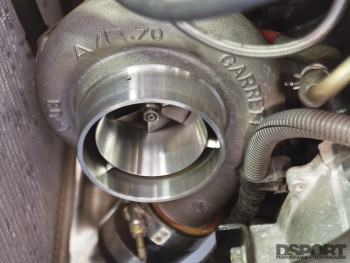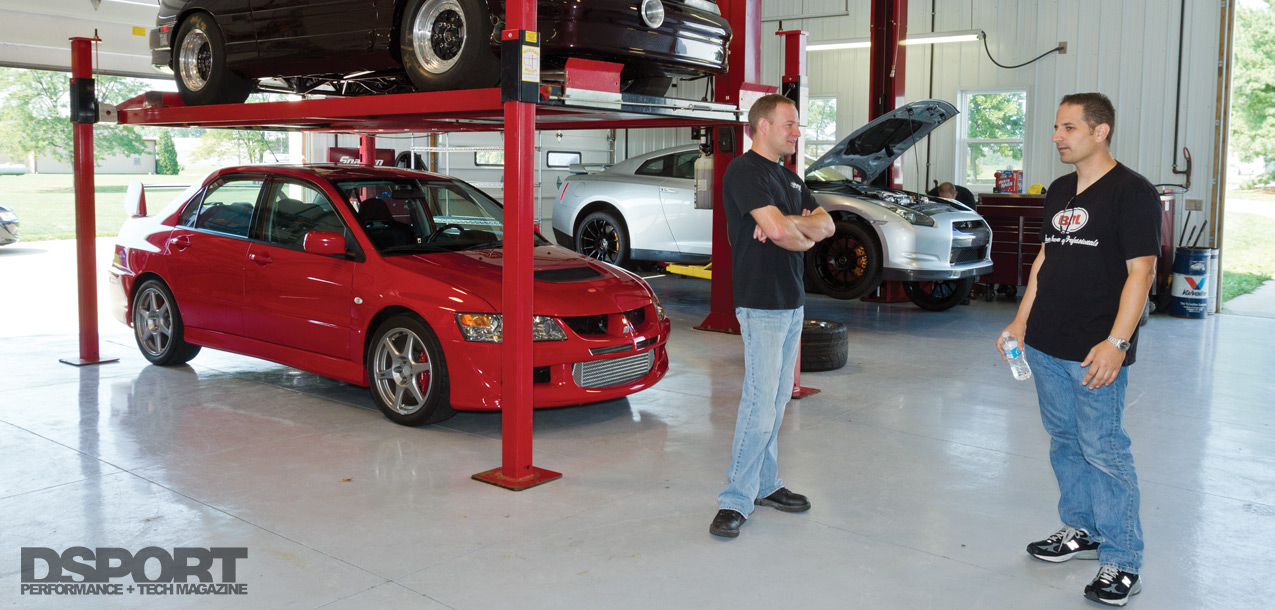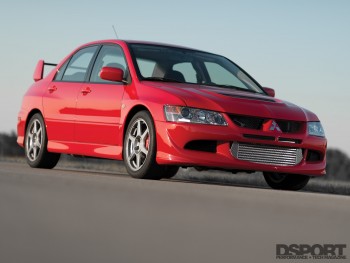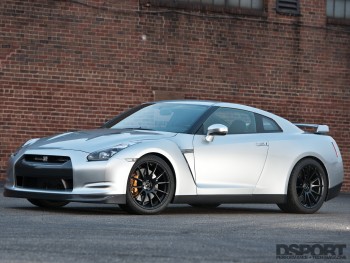There isn’t a supercar at any price that run the quarter mile in 9.5 seconds. That’s right. If you wanted a turn-key streetcar that could run the quarter-mile in under 10 seconds on radials tires with a fuel you can get at the pump, a million dollars wouldn’t deliver. However, there are a few platforms that can be upgraded to this performance level with the right mix of aftermarket parts. A number of top tuners have proven that an R35 GT-R or a Mitsubishi EVO VIII/IX can become King of the Street with the right combination of parts and tuning. Since John Shepherd’s R&D/Demo cars both run 9s in street trim, we decided to take a close look at the costs of building either platform. Understanding the reasons behind “why?” each part is needed will hopefully help you with your performance streetcar build, even if you have a more modest performance goal.
Text by Michael Ferrara and Richard Fong, Photos by Richard Fong
Article Originally Published in Issue #122 of DSPORT
What’s the Same?
In looking at either the GT-R or EVO, a number of similarities become apparent. Both cars are all-wheel drive (AWD), both feature turbocharged engines, both run on E85 and both rely upon reinforced drivelines to deliver 9-second performance. Being AWD, an EVO or GT-R is able to use all four-contact patches as traction points to propel the vehicle. On a FWD or RWD vehicle, only the contact patches of the two drive wheels factor in the straight-line traction equation. When a FWD or RWD vehicle launches and the balance of weight shifts over the drive wheels, the total amount of available traction also changes. In the case of a FWD vehicle, the weight over the front tires is reduced during the “launch”, limiting traction even further. In many cases, a GT-R or EVO will deliver a 60-foot time (which is a great indicator of the vehicle’s ability to suddenly deliver power to the ground) on street tires that is even better than a RWD or FWD vehicle on racing slicks. On street tires, most AWDs will have at least a half-second advantage over FWD and RWD vehicles in the 60-foot times. By the end of the quarter-mile, the traction advantage of the AWD often equates to an elapsed time that is a full-second quicker than a FWD or RWD vehicle with an identical power to weight ratio and power curve. Being turbocharged, both the EVO and GT-R have the ability to produce power that is double, triple or even four times the output of a naturally-aspirated engine of the same displacement. Selecting a turbocharger capable of the required power levels while strengthening the engine to survive at these elevated cylinder pressures is part of the 9-second equation. Since there is no universally agreed upon definition for a streetcar, everyone has a different opinion. Some believe that any car that needs race gas to achieve its performance goals isn’t a streetcar. Up until the introduction of E85 to the pump, 91- or 93-octane fuel simply didn’t allow the boost pressure necessary on small displacement engines to make “9-second” power. Now, E85 has proven to allow tuners to make “race gas” power at high boost levels with a fuel you can get at the pump.
In many cases, a GT-R or EVO will deliver a 60-foot time (which is a great indicator of the vehicle’s ability to suddenly deliver power to the ground) on street tires that is even better than a RWD or FWD vehicle on racing slicks. On street tires, most AWDs will have at least a half-second advantage over FWD and RWD vehicles in the 60-foot times. By the end of the quarter-mile, the traction advantage of the AWD often equates to an elapsed time that is a full-second quicker than a FWD or RWD vehicle with an identical power to weight ratio and power curve. Being turbocharged, both the EVO and GT-R have the ability to produce power that is double, triple or even four times the output of a naturally-aspirated engine of the same displacement. Selecting a turbocharger capable of the required power levels while strengthening the engine to survive at these elevated cylinder pressures is part of the 9-second equation. Since there is no universally agreed upon definition for a streetcar, everyone has a different opinion. Some believe that any car that needs race gas to achieve its performance goals isn’t a streetcar. Up until the introduction of E85 to the pump, 91- or 93-octane fuel simply didn’t allow the boost pressure necessary on small displacement engines to make “9-second” power. Now, E85 has proven to allow tuners to make “race gas” power at high boost levels with a fuel you can get at the pump.
While the increased traction provided by an AWD configuration is key to maximizing acceleration, it is also delivers significantly more stress to the driveline. Everything in the driveline receives more stress simply because there is less wheel spin. As a result, a number of elements in the AWD driveline must often be upgraded to handle the increased power output.
What’s Different?
In looking at the GT-R and EVO there are a number of differences. These two vehicles differ in engine displacement, vehicle weight and transmission type. The GT-R’s larger displacement V6 engine provides a torque advantage over the smaller-displacement I4 engine in the EVO. Shepherd’s 9-second EVO addresses this issue by increasing the displacement of the engine to 2.3-liters.While this 15-percent increase in displacement is significant, an EVO still falls short of the torque output of the much larger 3.8-liter engine. This is especially true during off-boost and low-boost operation. While a 2.3-liter engine at 42psi of boost pressure may make the same torque as a 3.8-liter engine at 20psi, the smaller engine is going to be making less torque at equivalent boost levels.
As for vehicle weight, the EVO holds a solid advantage in this category. In the case of Shepherd’s 9-second cars, the EVO is 788 pounds lighter than the GTR. With the EVO, there is less mass to accelerate and less mass to stress the driveline. This means less power is required to achieve the same acceleration level. As an added benefit of the weight advantage, all of the consumables for the vehicle (tires, brake pads, rotors, etc…) will generally last longer. The EVO and GT-R also have a significant difference in the transmission and clutch department. The EVO relies upon a conventional transmission teamed with a multi-plate clutch. This setup provides a clutch pedal that heightens the driving experience. The GT-R features a paddle-shifted (or auto shifted) twin-clutch transmission. The main advantage of this transmission is the elimination of boost drop between gear shifts. The GT-R’s transmission also delivers consistent launches.






